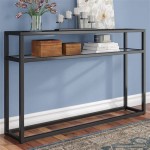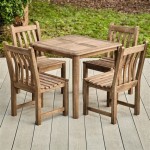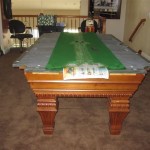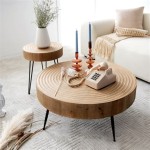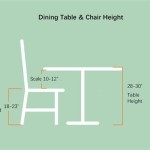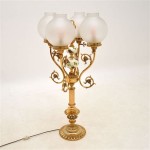Most Comfortable Swivel Bar Stools: A Comprehensive Guide
Swivel bar stools are a popular seating choice for kitchens, home bars, and entertainment areas. Their ability to rotate allows for easy conversation and access to different parts of the space without having to get up from the seat. While functionality is important, comfort is paramount, especially when considering seating options for extended periods. Therefore, selecting the most comfortable swivel bar stools requires careful consideration of several factors, including design, materials, and ergonomic features.
The purpose of this article is to provide a comprehensive guide to understanding the key aspects of comfortable swivel bar stools. It will explore the various elements that contribute to overall seating comfort, providing information to assist in making an informed purchasing decision. The goal is to equip readers with the knowledge necessary to find bar stools that not only complement their decor but also provide a comfortable and enjoyable seating experience.
Key Considerations for Comfort: Upholstery and Padding
The upholstery and padding of a bar stool significantly impact its comfort level. The materials used in these components directly affect how the body interacts with the seat and backrest. Selecting the right combination of materials ensures a comfortable seating experience, particularly during extended use.
Leather is a popular upholstery choice known for its durability and luxurious feel. High-quality leather tends to mold to the body over time, enhancing comfort. Additionally, leather is relatively easy to clean and maintain, making it a practical choice for high-traffic areas. However, leather can be more expensive than other upholstery options.
Fabric upholstery offers a wide variety of textures and colors, allowing for greater design flexibility. Microfiber and similar synthetic fabrics are often chosen for their stain resistance and ease of cleaning. Natural fabrics like cotton and linen can be comfortable but may require more maintenance and are more susceptible to staining. The type of weave and fabric weight also affect its durability and overall feel.
Padding materials play a crucial role in comfort. High-density foam provides firm support and resists compression, ensuring long-lasting comfort. Memory foam conforms to the body's shape, providing customized support and pressure relief. A combination of different foam densities can be used to achieve optimal comfort and support. For example, a firm base layer of high-density foam can be topped with a layer of memory foam for added cushioning.
In addition to the type of padding, the thickness of the padding also affects comfort. Thicker padding generally provides more cushioning and support, but it can also affect the overall height of the stool. It's crucial to strike a balance between padding thickness and the desired seat height for optimal ergonomic positioning.
Ergonomic Design and Support Features
Ergonomics is the science of designing workspaces and equipment to fit the human body. An ergonomically designed bar stool promotes good posture, reduces strain, and enhances comfort. Several features contribute to the ergonomic design of a swivel bar stool, including the backrest, footrest, and seat shape.
A well-designed backrest provides essential support for the lower back, reducing strain and discomfort. Backrests can vary in height, shape, and curvature. A lumbar support feature, which provides added support to the lower back, is particularly beneficial for individuals who spend extended periods sitting. The height of the backrest should be considered to ensure it provides adequate support without restricting movement.
Footrests are crucial for maintaining proper posture and reducing pressure on the legs and feet. An appropriately positioned footrest allows the feet to rest comfortably, promoting blood circulation and preventing fatigue. The height of the footrest should be adjustable to accommodate individuals of different heights. The distance between the seat and the footrest should allow for a comfortable angle in the knees and ankles.
The shape of the seat also affects comfort. A contoured seat distributes weight evenly, reducing pressure points and promoting circulation. Waterfall seat edges, which slope downward towards the front of the seat, can help prevent pressure on the back of the thighs, improving comfort and reducing leg fatigue. Certain seat designs can encourage proper posture and spinal alignment.
Swivel functionality itself can contribute to comfort by allowing users to easily adjust their position without having to get up from the stool. The smoothness and ease of the swivel mechanism contribute to the overall user experience. A swivel mechanism that rotates freely and quietly enhances comfort and convenience.
Height, Adjustability, and Stability
Selecting the correct height of a swivel bar stool is essential for ensuring comfort and proper ergonomic positioning. The ideal height depends on the height of the counter or bar where the stool will be used. Proper height alignment helps prevent strain on the neck, back, and legs.
Standard bar height counters typically range from 41 to 43 inches. For these counters, a bar stool with a seat height of 29 to 32 inches is generally recommended. Counter height counters typically range from 35 to 37 inches. For these counters, a counter stool with a seat height of 24 to 27 inches is recommended. It is advisable to measure the height of the counter or bar before purchasing bar stools to ensure a proper fit.
Adjustable height bar stools offer greater flexibility and can be used with counters of varying heights. Adjustable height stools typically use a gas lift mechanism to raise or lower the seat height. This allows users to customize the seat height to their individual needs and preferences. The range of height adjustability should be considered to ensure it meets the specific requirements of the space.
Stability is a critical factor for both safety and comfort. A stable bar stool will not wobble or tip easily, providing a secure and comfortable seating experience. The base of the stool should be wide enough to provide adequate support. A wider base generally offers greater stability. The materials used in the base construction also affect stability. Metal bases are typically more stable than wooden bases due to their higher weight and strength.
The weight capacity of the bar stool should also be considered. Exceeding the weight capacity can compromise the stool's stability and potentially lead to damage or injury. It is important to select a bar stool that is rated to support the weight of all potential users.
The combination of appropriate height, adjustability (when applicable), and a stable base ensures a comfortable and safe seating experience. These factors are fundamental to the overall usability and enjoyment of swivel bar stools.

6 Tips For Buying The Most Comfortable Counter Bar Stools

6 Tips For Buying The Most Comfortable Counter Bar Stools

Glitzhome Mid Century Modern Walnut Swivel Bar Stool Set Of 2

26 Swivel Counter Stool With Tufed Back Modern Upholstered Barstool Wood Legs Lue Bona

Amish Isla Upholstered Counter And Bar Stool With Swivel

Comfortable Modern Bar Stools Debunking The Myth Barstool Comforts

Oliver 30 1 2 High Cream Fabric Scroll Back Swivel Bar Stool

Kellan Low Back Swivel Bar Counter Stool Grandin Road

Savoy Swivel Bar Counter Stool 30 Height Sable Walnut Leather Frontgate

6 Tips For Buying The Most Comfortable Counter Bar Stools

